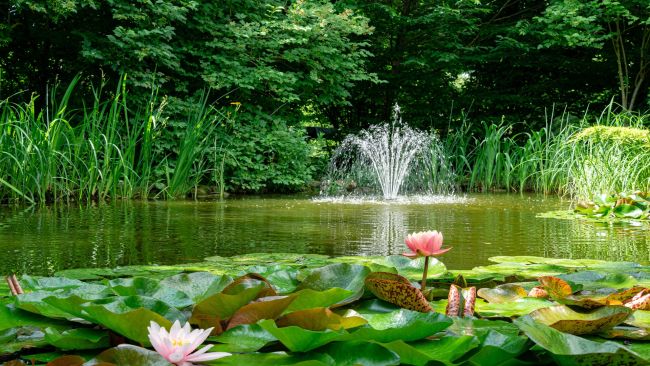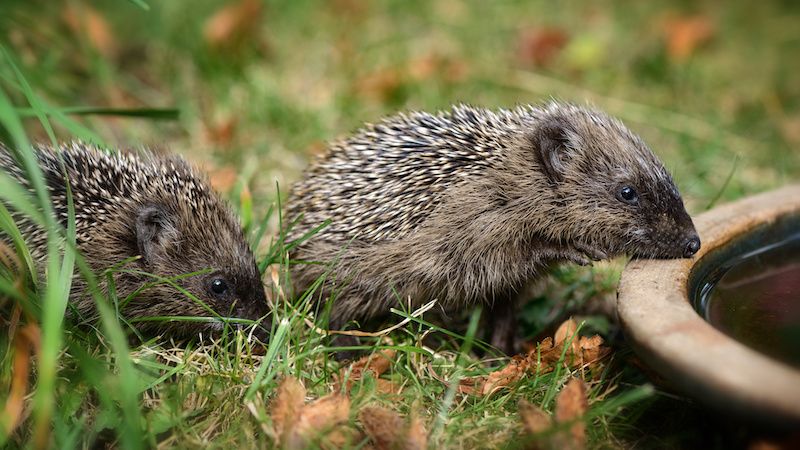
Take 5… Homes with ponds
We take a look at some of the best homes with ponds currently on the market


| According to the National Biodiversity Network, populations of native species have fallen by an average of 60% since 1970, with a combination of rapid urbanisation, pollution, climate change and harmful farming techniques leaving a further 15% of species in danger of extinction. In recent years, great strides have been taken to restore natural habitats in the UK. The Government’s £40 million Green Recovery Challenge Fund is currently awarding grants to conservation projects and other eco-friendly schemes. But what can be done on an individual level to give flora and fauna the best chance to flourish? As we head into spring one year after the start of the pandemic, now is the perfect opportunity to reflect on how we can support mother nature from the comfort of our homes. Threatened plant life Research from Kew’s Royal Botanic Gardens in 2020, estimated that 39.4% of plants around the world are threatened with extinction. A figure that has almost doubled since 2016. The outlook for biodiversity in the UK follows a similar pattern. In England alone, 36 plant species have become extinct in the last 50 years. But what is causing this threat to plant life? Changing fashions in the gardening world mean some species fall out of favour as we search for ever more picture-perfect flowers. Specialist cultivated plant numbers have also fallen due to a general decline in horticultural skills. Unfortunately, there is still more to the story. Habitat destruction and the illegal trade of bulbs pose a substantial threat to the future of our most loved wild flowers. Bluebells for example, make a surprising feature on the endangered plant list, despite being a common flower around the UK. They are now even subject to protection by the Wildlife and Countryside Act, with illegal trade of the plant threatening fines of up to £5,000. There are many ways to protect plant life from home, from nurturing seeds on balconies and in gardens, to avoiding the use of harmful pesticides. After all, between 85 and 95% of the UK’s insect-pollinated crops rely on wild pollinators such as bees and butterflies in the fertilisation process. Alternatively, you can support wild flower charity Plantlife by donating towards their mission to create 120,000 hectares of species-rich meadows in the UK. Dwindling bird numbers Bird populations are categorised according to a traffic-light system. Red, amber and green lists sort species from the most vulnerable to those of least concern respectively. Sadly, one in four UK birds feature on the red list. Puffins, wood warblers and the aptly named lesser spotted woodpecker all feature. More familiar species appear on the list too, including starlings, song thrushes and house sparrows.
The total area of all gardens in the UK exceeds that of our nature reserves, meaning that small measures can make a big difference to a wide variety of vulnerable species. A damp ditch, or rill, in your garden will make the perfect nest for song thrushes, as this red-listed species preys on worms, snails and caterpillars found near shallow water. Natural nesting sites are in decline, but purpose-built or DIY nest boxes can be fixed to the smallest of outdoor spaces to provide a safe environment for birds without overtaking your property. Because many species are territorial, spreading bird boxes across millions of gardens is the most effective way to support our feathered friends. If you’ve still got more to give, the Royal Society for the Protection of Birds (RSPB) welcomes new members and donations to support a wide range of campaigns focused on preserving avian habitats and much more. Endangered mammals The most threatened mammals in the UK include the critically endangered Scottish wildcat and the greater mouse-eared bat. Endangered species include the beaver, red squirrel and grey long-eared bat, while hedgehogs join two other bat species in the vulnerable conservation level.
Providing food for our most endangered species from our homes requires careful planning. If outdoor spaces are separated from natural habitats by busy roads, efforts to lure animals into gardens could prove fatal. One of the simplest ways to open up your garden to vulnerable species is to create a hedgehog highway. Improvements in fencing and our compartmentalising of land has made it difficult for hedgehogs to create territories, forage and find mates. A 13 cm x 13 cm hole will suffice and prevent most pets from squeezing out of your garden. Caring for species, though, is just one part of the puzzle. You can go further to support Great British wildlife by reporting rare creature sightings. Conservation teams can then use this data to improve their efforts to restore animal populations. The People’s Trust for Endangered Species ‘Log your ‘hog’ initiative, is one such example. Of course, even if you don’t have a large outdoor area at home, you can always support wildlife through charity. Adopting a red squirrel costs around £25 and your donations help to ensure these endangered critters get the love and support they need from conservation professionals. Ready to get started? Discover more ideas to suit all kinds of private outdoor spaces, from vertical gardens, to compact compost heaps, or even building a pond. The Wildlife Trust has all sorts of ideas to help you create a wildlife-friendly environment at home.
|